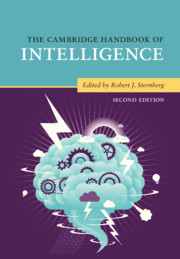Book contents
- The Cambridge Handbook of Intelligence
- The Cambridge Handbook of Intelligence
- Copyright page
- Dedication
- Contents
- Figures
- Tables
- Contributors
- Preface
- Part I Intelligence and Its Measurement
- Part II Development of Intelligence
- Part III Intelligence and Group Differences
- Part IV Biology of Intelligence
- Part V Intelligence and Information Processing
- Part VI Kinds of Intelligence
- 27 The Theory of Multiple Intelligences
- 28 The Augmented Theory of Successful Intelligence
- 29 Emotional Intelligence
- 30 Practical Intelligence
- 31 Social Intelligence
- 32 Collective Intelligence
- 33 Leadership Intelligence
- 34 Cultural Intelligence
- 35 Mating Intelligence
- 36 Consumer and Marketer Intelligence
- Part VII Intelligence and Its Role in Society
- Part VIII Intelligence and Allied Constructs
- Part IX Folk Conceptions of Intelligence
- Part X Conclusion
- Author Index
- Subject Index
- References
27 - The Theory of Multiple Intelligences
from Part VI - Kinds of Intelligence
Published online by Cambridge University Press: 13 December 2019
- The Cambridge Handbook of Intelligence
- The Cambridge Handbook of Intelligence
- Copyright page
- Dedication
- Contents
- Figures
- Tables
- Contributors
- Preface
- Part I Intelligence and Its Measurement
- Part II Development of Intelligence
- Part III Intelligence and Group Differences
- Part IV Biology of Intelligence
- Part V Intelligence and Information Processing
- Part VI Kinds of Intelligence
- 27 The Theory of Multiple Intelligences
- 28 The Augmented Theory of Successful Intelligence
- 29 Emotional Intelligence
- 30 Practical Intelligence
- 31 Social Intelligence
- 32 Collective Intelligence
- 33 Leadership Intelligence
- 34 Cultural Intelligence
- 35 Mating Intelligence
- 36 Consumer and Marketer Intelligence
- Part VII Intelligence and Its Role in Society
- Part VIII Intelligence and Allied Constructs
- Part IX Folk Conceptions of Intelligence
- Part X Conclusion
- Author Index
- Subject Index
- References
Summary
The theory of multiple intelligences (MI) was set forth in 1983 by Howard Gardner. The theory holds that all individuals have several, relatively autonomous intelligences that they deploy in varying combinations to solve problems or create products that are valued in one or more cultures. Together, the intelligences underlie the range of adult roles found across cultures. MI thus diverges from theories entailing general intelligence, or g, which hold that a single mental capacity is central to all human problem-solving and that this capacity can be ascertained through psychometric assessment. This chapter presents the evidence and criteria used to develop MI, clarifies misconceptions about the theory, and examines critiques of the theory. It considers Einstein’s typology of scientific theories through which it is possible to understand MI as a “constructive theory.” It then examines issues of assessment entailing MI and educational applications of the theory.
Keywords
- Type
- Chapter
- Information
- The Cambridge Handbook of Intelligence , pp. 659 - 678Publisher: Cambridge University PressPrint publication year: 2020
References
- 6
- Cited by

